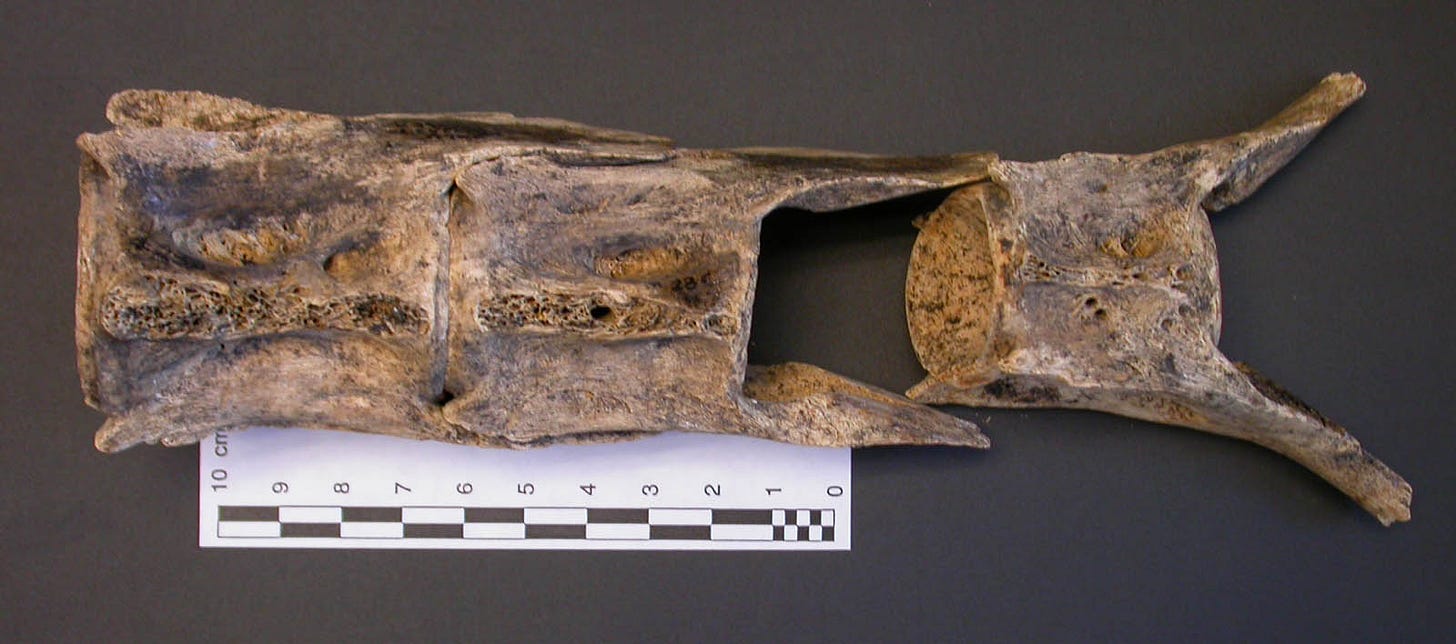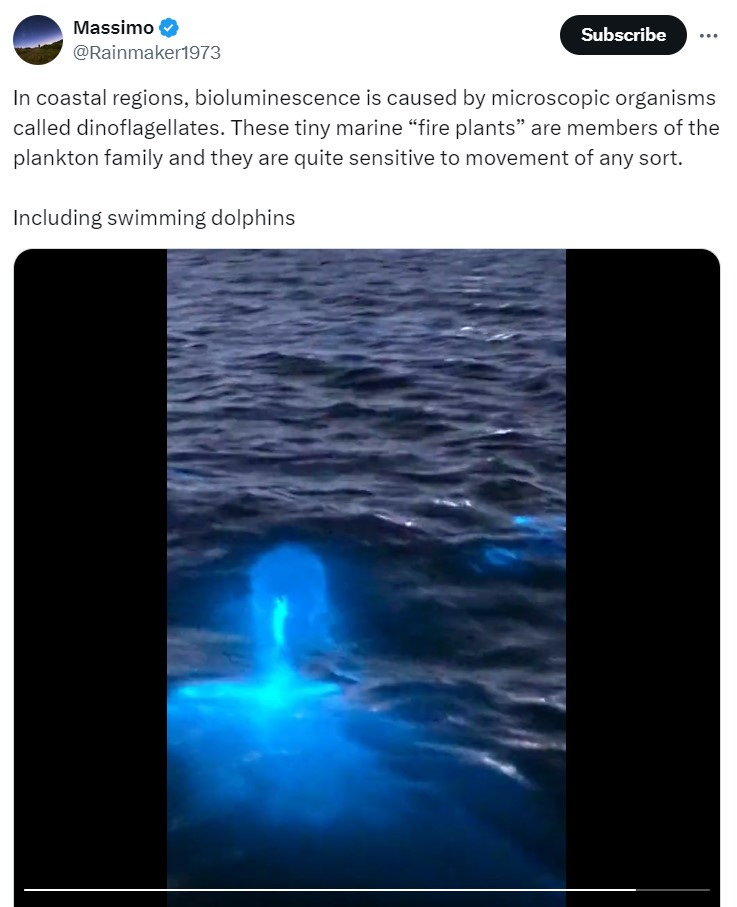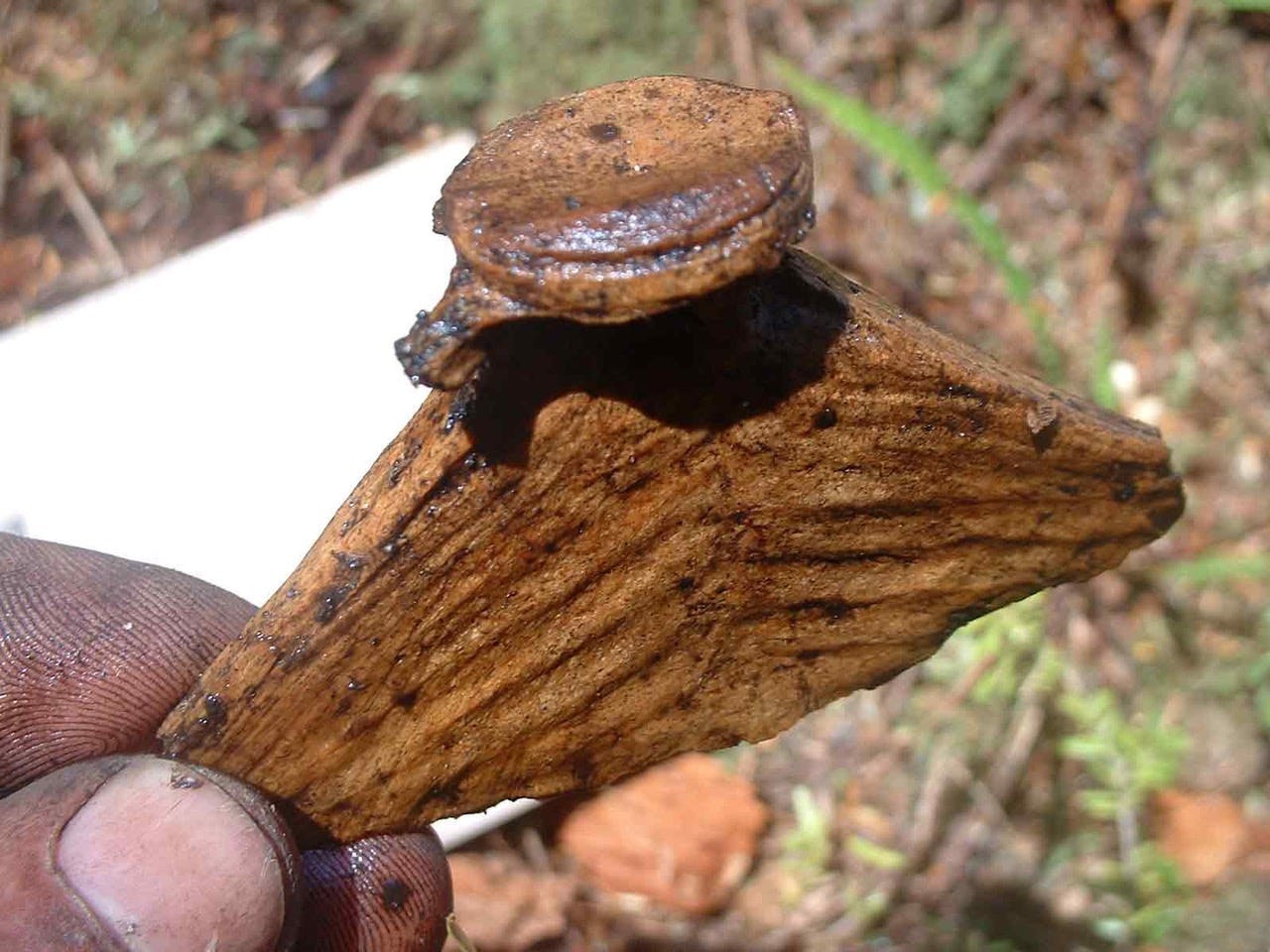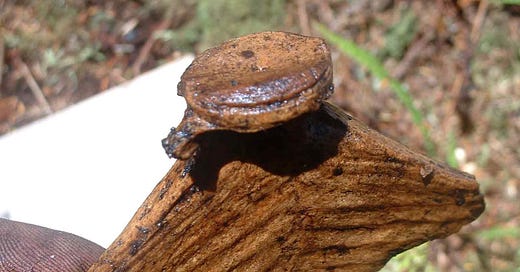Documenting giant bluefin tuna off the west coast of Canada - Conclusion
"If Nuu-chah-nulth hunters were willing to take on giant tuna from a canoe, they have my undying respect."

Two interesting follow-up stories came out of my giant bluefin tuna research. Parts 1 and 2 are here and here.
A few years after I’d published my comprehensive paper, I found myself back at the Smithsonian looking at their collection of modern skeletons. This time, I was trying to identify whale bones that had been excavated from a site in the Eastern Aleutians. I could tell from the shapes that I must have at least four or five different species but only the Smithsonian had the collection I needed to tell one from the other.
I spent most of one day with Jim Mead, the head of the marine mammal department, who at that time was close to retirement age.
Over lunch, I told him the bluefin tuna story and he countered it with one of his own.
He said that back in the 1950s, when he was a young man and newly-hired at the museum, he and a colleague had been sent out to capture a few pilot whales for the collection, not far from Cape Cod. In other words, they had a descent-sized boat equipped with whaling gear and were prepared to take a whale 16-20 feet long and weighing up to 6,000 lbs.
They spotted a disturbance in the water up ahead and advanced for a possible kill. When they got closer, they found it wasn’t a whale but an enormous bluefin, at least four feet wide across the head and an estimate 14 feet long.
And Jim said to me [I’m paraphrasing here, from memory], “We got the hell out of there. Absolutely no way we were going to take on a tuna that size. I’m sure the museum would have been very happy to have the specimen but I wanted nothing to do with it. I know the reputation of Nuu-chah-nulth whalers and I’ve always admired them for that but by god, if they were willing to take on giant tuna from a canoe, they have my undying respect.”
Giant Atlantic Bluefin Tuna chasing Garfish in South Devon, UK! Oct. 11, 2023
About a decade later, I was at a fisheries conference in Victoria billed as an opportunity for academics, commercial fishermen, and aboriginal fishermen to talk about their concerns. I only knew a couple people and I couldn’t find any of them when lunch time rolled around, so I joined a group of strangers. As I ate, one of the First Nations fishermen sitting across the big round table started talking about how things had changed in recent times.
Again, I’m sort of paraphrasing from memory, but he proudly told the others that he was Nuu-chah-nulth and his ancestors used to hunt giant bluefin tuna off western Vancouver Island. But these big fish didn’t come there any more. And he said that his people only really knew about this change because the bones of giant tuna had been recovered from archaeological sites in Nuu-chah-nulth territory, and that someone had figured out what they were and had written a scientific paper about it.
I waited until he was finished and then sort of raised my hand and said, “That was me. I did that.” He looked over the table at my name tag and said, “Oh yeah, that was you! We were really happy to learn that the tuna used to be here, and that our ancestors had hunted them. It was so cool that you were able to get such useful information from the old bones and that you talked to the elders before they died. I keep looking out for big tuna when I’m out fishing but I’ve never seen one or heard of anyone else seeing one. It’s really weird that they’re gone. We’d really like to know what’s happened.”
Unfortunately, we still don’t know why giant bluefin have abandoned B.C. waters. As happens with many species, it could be that the extremes of their range contracted when their population declined. However, the largest drop in bluefin numbers didn’t really come until after the mid-1900s, which wouldn’t explain why there were no giant tuna seen in B.C. waters between 1890 and 1950.
However, it’s possible, and perhaps more likely, that the specific conditions that encourage giant bluefin to move north simply have not occurred since 1890. Our assumptions of how often bluefin came into B.C. waters might be skewed by the lack of precise dates for the tuna remains.
In other words, there may well have been 100 years or more between tuna visits prehistorically and that this frequency was entirely normal.
Biologists couldn’t really explain why so many giant bluefin showed up off California in 1988 so it’s perhaps unreasonable to try and determine why none of them came north to Vancouver Island as they used to do. Enormous bluefin have been caught sporadically in California waters since 1988 – and fairly often in recent years – but these movements are still considered rare for fish old enough to be “post-spawners” (see map below).

It’s possible, although unlikely, that giant bluefin have visited the waters off western Vancouver Island since 1950 and either no one saw them or all observers failed to realize what they were seeing.
Perhaps there has simply been no one out on the ocean at night, near the shore or sitting on a high cliff, who was expecting to see a giant bluefin plowing through the surface waters and therefore didn’t recognize the tell-tale disturbance at the surface revealed by the bioluminescent plankton.
Giant bluefin may simply have been mistaken for night-feeding dolphins, as has happened in California (see below).

It could also be that a few big bluefin sometimes followed a certain type of squid or other baitfish like sardine up from California into B.C. waters under certain circumstances, but that the abundance and movement of those animals has changed over time.
In other words, it seems likely that some combination of factors – including the reduced total population size of bluefin, changes in distribution or abundance of prey species, the rarity of warm water incursions into B.C. waters, and an inability of observers to recognize a feeding bluefin – are at play in explaining why giant bluefin haven’t been spotted off western Vancouver Island since the late 1800s.
However, what we do know is that even more bluefin bones have been recovered from sites excavated along the coast in recent years. Many more tuna bones from both Barkley and Nootka Sound have been found and even a few from an ancient village site near Ucluelet, located just south of Tofino.

Now that archaeologists know what they are, local First Nations and especially the kids, are excited to see the bones and hear the stories about how giant tuna used to be hunted — and how a biologist figured out what kind of tuna they were and how big they grew.
They know a good story when they hear one and I couldn’t agree more.
Subscribers have exclusive access to a podcast of me reading this entire three-part essay, which you can find here.



